Olympus Q&A: The story of the Stylus 1, the relationship with Sony, and where is the camera market heading?
posted Monday, February 3, 2014 at 8:16 PM EDT
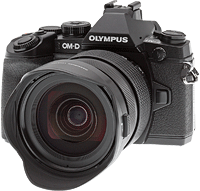
2013 was a great year for Olympus. Rejuvenated by an investment from Sony, the company launched some seriously impressive products. Key among these was our Professional Camera of the Year for 2013, the flagship Olympus E-M1 mirrorless camera, but the bright-lensed Stylus 1 enthusiast zoom -- a camera we're currently in the process of reviewing -- has also garnered much praise and publicity. During the Consumer Electronics Show, Imaging Resource publisher and editor-in-chief Dave Etchells met with executives from Olympus to discuss these and other products, share reader questions, and get a feel for where Olympus sees things headed in the future.
Taking part in the interview were Setsuya Kataoka, General Manager, Product Development Dept 1, R&D Division, and Masaomi Tomizawa, General Manager, Imaging System Development Dept 1, System Platform Technology R&D Division, both of Olympus Imaging Corp. in Japan. Serving as translator was Dan Kato, Senior Manager, Trade Marketing, Olympus Imaging America Inc.
Dave Etchells/Imaging Resource: The Stylus 1 is a very interesting camera to us at Imaging Resource. What led to its development? Who do you see as its target customer, and where does it fit into the market?
Olympus: We had a lot of demand from users for a bright lens combined with long tele focal lengths, not having to compromise aperture at the tele end.
Responding to your second question, there are three targets. First, a second camera for people who are already SLR users. Second, those people who had been using an SLR, back when we first launched the DSLR -- people who kind of gave up because it's heavy and they got tired of carrying those bodies and lenses. They want a lighter option, but don't want to compromise having a bright lens. Third, for people who want to travel, pack light and have an all in one camera -- they want to go with one body. Those are the three main customers.
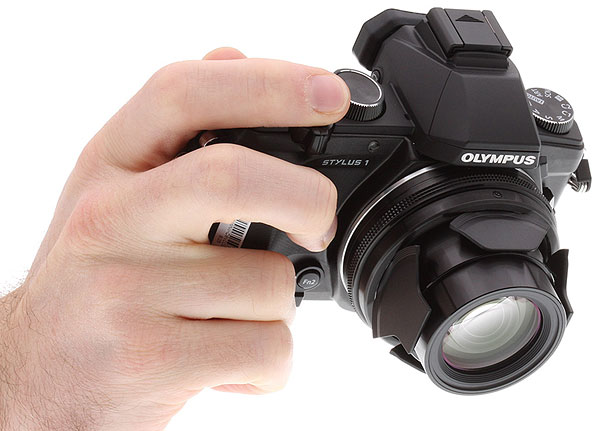
DE: How's it doing in the market? Has it met expectations, not met, or exceeded?
Olympus: Actually, it has exceeded our initial assumptions -- not necessarily speaking about some specific country, but globally, we are receiving over-demand.
DE: Great! We liked it a lot. It seemed like it had a very good user price point and feature set. Conventional long zooms were really overpriced, but had much less capability. There's the recent Sony RX10, but it's much more expensive -- this came right in the middle.
Olympus: Yes, I think so. This is my opinion, my observation, but really only a very limited set of specialty dealers expressed concern over the price points. We discussed this maybe one or two months ago, and I said let's meet in CES and check the sales figures, and actually I won the bet.
DE: You won the bet?
Olympus: I won the bet for the sales figures, yes, at that particular account.
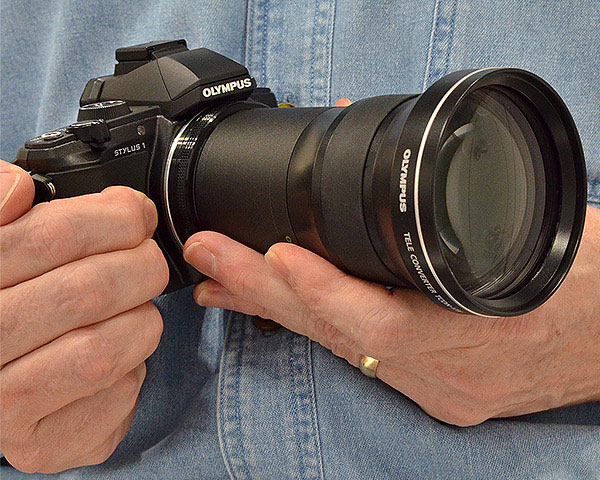
DE: I have a question from a reader, about the 12-40mm lens. I gather there have been some reports of breakage issues with it, and I'm wondering, is that a real problem, or is it one of those things that gets reported a lot but isn't actually statistically significant?
Olympus: What do you mean by breakage?
DE: I'm not sure of the failure mode -- this was a question from a reader.
Olympus: We have to understand what this breakage means, but you know, based on user Q&A and history after the shipment, I don't think we've seen any specific issues concentrated on breakage.
DE: So, no preponderance of user reports focused on breakage?
Olympus: Yes, from the U.S. or globally. We were contacted last week by a member of one of the forum groups with a similar question. We reached out to product marketing to find out if there was any evidence of a pattern of the sort of issues he was talking about. The response was that there have been only two instances of breakage reported with, at that time, 5,000 to 10,000 lenses shipped worldwide. To us, that doesn't constitute a known issue.
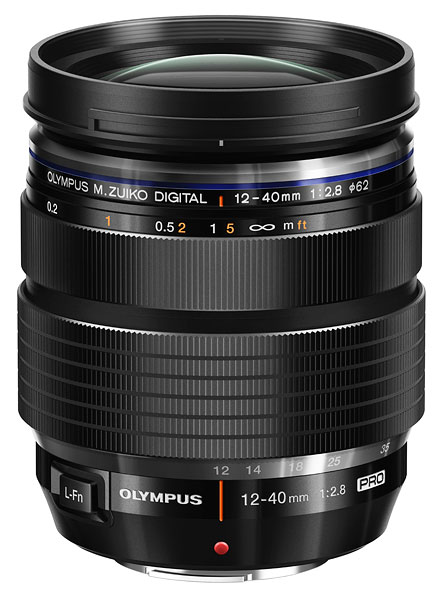
DE: OK, so only two reports of breakage out of perhaps 10,000 units shipped. That doesn't sound like a generic problem with the lens being fragile in any way.
We're interested about the partnership with Sony, and how that's working out. Is Sony mainly supplying sensors and other components to Olympus, or is there shared R&D between the two companies? And is there technology that's crossing from Olympus back to Sony as well?
Olympus: In answer to your question about the Sony partnership, we don't have any kind of exchange of technologies. However, we do have a supplier-buyer relationship on some certain devices that we provide to Sony, and that Sony provides to Olympus.
DE: Ah, so you also sell devices to Sony?
Olympus: Yes, but we don't disclose what kind of devices.
DE: By devices, you mean sub-components of cameras?
Olympus: Yes.
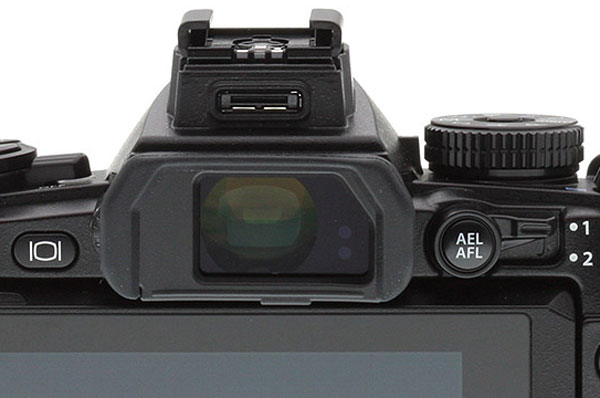
DE: Now that we have on-chip phase detection, we've got really great electronic viewfinders in Olympus cameras, and we can share straight from the camera with Wi-Fi, what areas do you see as most ripe for improvement in the future? What would you most like to see change with cameras as they evolve?
Olympus: In terms of functionality, or anything else?
DE: Yes, in terms of functionality, design, support for different use cases.
Olympus: Is that question because we are kind of pioneering some new technologies, in some new ways?
DE: Yes, it's a little bit about your pioneering and a little bit of what's going on in the back room, and “Where do we go from here?”
Olympus: Of course, we cannot disclose any concrete, detailed information, as you know, but answering your question, there are two aspects. First, polishing the technology of the basic functionality of the camera -- whether it's exposure, whether it's white balance, auto-focus, everything.
DE: You mentioned the electronic viewfinder, getting the lag time down so it's more like an optical viewfinder?
Olympus: Yes, the EVF is really a basic feature that many people want in their camera. Whether it's enthusiasts or novices, they like the EVF. Ever since we started having electronic viewfinders, there's always been room for improvement. So, EVF, white balance, auto-focus, those are basic camera things.
Second, everything -- even your car -- is now connected to the network. So we want to provide not only easy uploading of your images or videos to the Internet, but good communication with networked devices or the cloud. We're looking at what we can do with the camera that nobody has imagined.
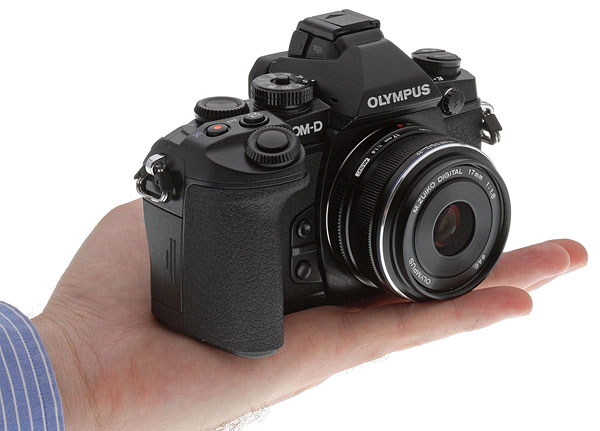
DE: That's the sort of direction you see? One of my personal favorite features of the E-M1 is the dedicated white balance button. How did you decide to add that? What has been the reception with the Olympus professionals? Can we expect that feature to maybe migrate to other cameras?
Olympus: This is part of the polishing up the basic functionality of the camera. Accurate color balance or color reproduction has always been a demand, from the professional level down to the novice. They want to reproduce what they see with their eyes. Ever since we started with digital, we have always had that dedicated white balance button, and we have been improving this -- I think you already see that in many of our cameras.
DE: Just not the dedicated button in the front.
Olympus: Not the dedicated button, but you can set the white balance.
DE: We're running short on time, but I wanted to get in one more question. We've seen a relatively sudden shift away from low-pass filters. While there is processing you can do to reduce the incidence of moiré, in cameras without low-pass filters, we've seen moiré issues in certain shots from every manufacturer. Is there really that much demand? The increase we see in sharpness really isn't all that much.
Olympus: It is a fact that, without the AA filter, the resolution will increase. Compensating for moiré -- it's a combination of multiple factors. One, it's the sensor -- the pixel pitch becoming smaller and smaller will help reduce moiré. But just that by itself isn't enough to minimize the moiré -- it's a combination of other factors, like the image processing -- how refined the image processing is, combined with the smaller pixel pitch. It's not only that -- it's also combined with the sharpness of the lens, the resolution the lens itself has, combined with the accuracy of the auto-focus system.
As Olympus, we have that pixel pitch and the image processing and the lens and auto-focus -- having all these combined, we have come to a point that, yes, we can eliminate the AA filters because we can compensate for the moiré, and we can gain the benefits of the increased resolution. There might be other manufacturers who have just tackled it because of this shorter pixel pitch and aren't doing a proper job on the other aspects like the processing or the lens or the auto-focus.
DE: Okay, because we have seen moiré from the E-M1, in some cases.
Olympus: In some cases, yes.
DE: So it sounds like the answer is that, generally, as pixel pitch gets progressively smaller, moiré becomes less of an issue?
Olympus: Yes, that and the processing are both important.
DE: Well, I see that we're unfortunately out of time, the briefing earlier took more time than I'd anticipated. (Ed. Note: The Olympus E-M10 that was announced just the other day was what took the time. VERY slick little camera, and an incredible value at the price point they managed to hit with it.) Perhaps we can continue this interview in Japan, around the CP+ show time? For now, thank you very much for your time.
Olympus: Yes, we will try to arrange that, thank you.